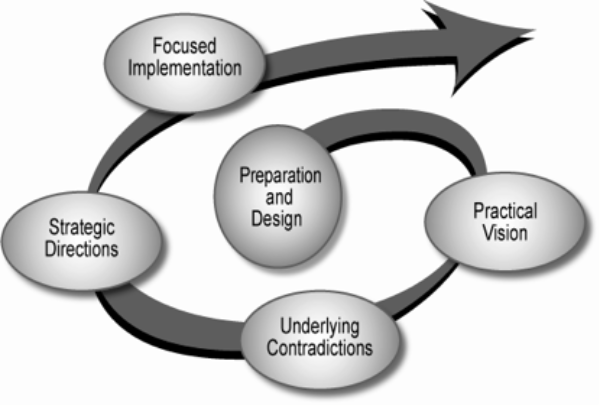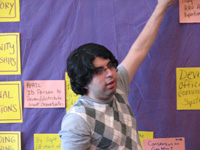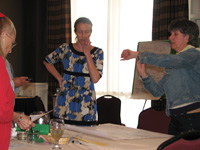Participatory Strategic Planning

Most commonly our Associates are called upon to facilitate strategic planning events within associations, agencies or organizations. Our uniquely participatory approach uses ToP® methods for long and short–term planning that includes creating a three–to–five–year vision, identifying underlying contradictions that block the vision, defining two–year strategic directions, and developing one–year objectives and a 90–day implementation plan.
Partners associates also support participatory project assessment and documentation including working with the clients to document the project journey of implementation, identify accomplishments and results, and articulate the lessons learned and next steps.
The following is a brief description of the core of ToP® Participatory Strategic Planning Process. Each session of Participatory Strategic Planning is done in a basic workshop format which includes individual and small group brainstorming to generate data, organizing the data to look at the new relationships which are formed and naming the data in order to clearly discern the consensus of the group. These activities are done in a variety of ways depending on the particular objective of the session. At times work is done individually, at times as a whole group, and, at times there are small teams working to clarify ideas.
The process builds consensus, achieves effective group communication, turns ideas into productive action, and shapes concrete accomplishments into a strategic plan.
Rural Health Office of Arizona Associates completed a 6 month project in developing a strategic plan for the Rural Health Office of the Mel and Enid Zuckerman School of Public Health at the University of Arizona. Funded through a grant from the Kellogg Action Lab, the initiative combined traditional ToP Strategic Planning with a study of the Five Dysfunctions of a Team and Facilitation Methods Training for key staff.
United Methodist Committee on Relief (UMCOR) Sri Lanka. The agency was able to bring together staff from four remote field offices to give input into a 5 year strategy for programming throughout the country going forward. Resulted in a coherent national strategy to present to donors as well as increased communications across all the offices.
The American Academy of Medical Acupuncture began in 1988 with a participatory strategic plan. In 1998, growth in membership and expansion of programs required a new strategic plan. In 2008, strategic plans were developed to transition from the founders to new leadership and to expand the member services. Partners in Participation Associates have been the facilitators of the strategic planning at each step along the way.
Native Images, a behavioral health organization for urban Native Americans in Tucson, was faced with a new board and program growth. The strategic planning was an excellent opportunity for the board and staff to work together to forge plans for the next five years.
City of Scottsdale. Facilitated Strategic Planning events for three departments including Dept of Parks & Recreation, Dept of Human Resources, and the Dept of Facilities and Maintenance. Resulted in each department determining clearly defined actions that allowed them to monitor their work and progress.



